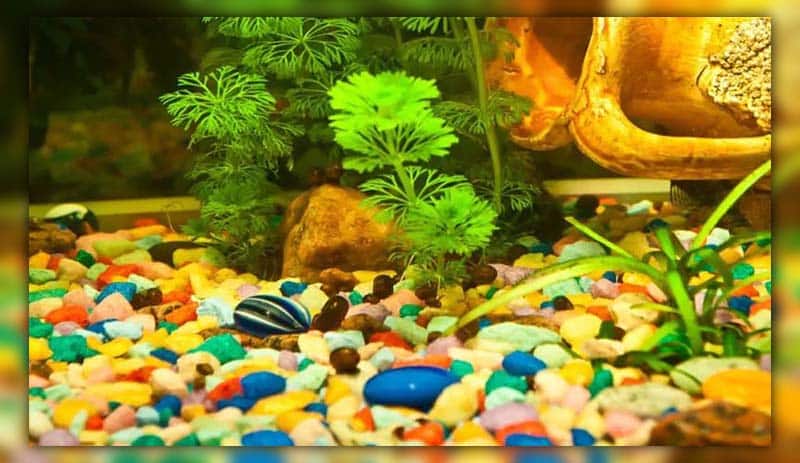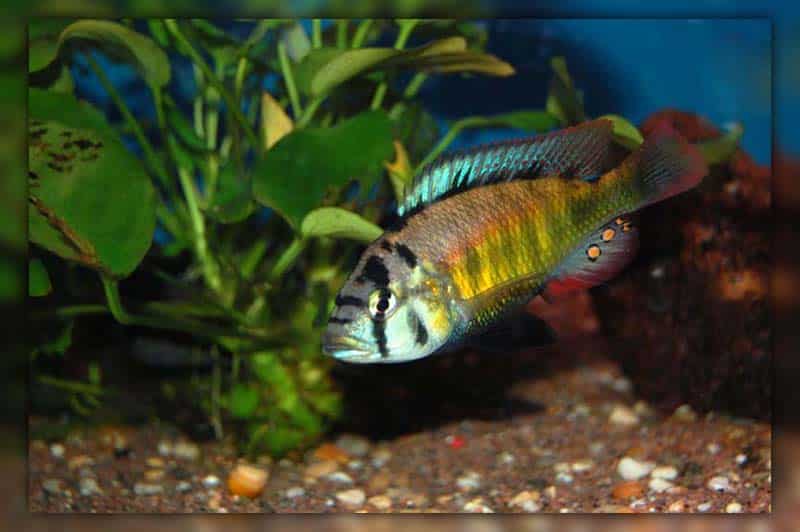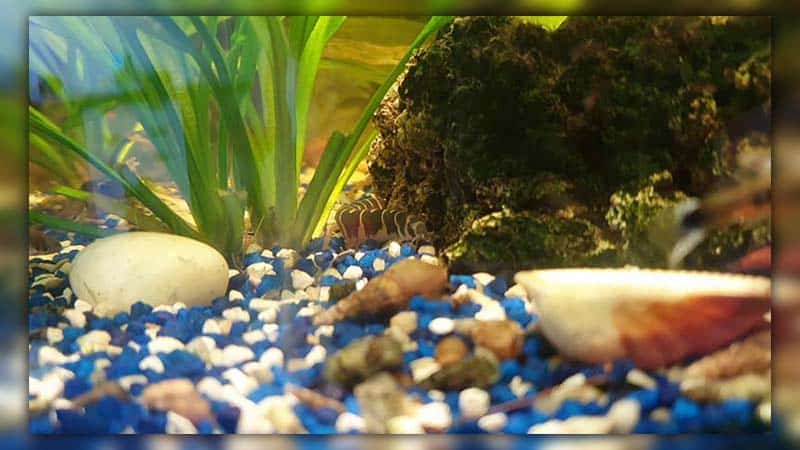Understanding the correct quantity of gravel for your fish tank is essential for the well-being of your aquatic pets. Gravel serves as a substrate in the aquarium, playing a pivotal role in controlling bacterial growth and creating a conducive environment for your fish. It’s not just about aesthetics, but also about maintaining a healthy ecosystem within your tank.
In this article, National Park Aquarium will guide you on how to calculate the amount of gravel needed to suit each size of your tank. We will explore the benefits of using gravel in fish tanks and why it’s necessary for your aquarium.
How Much Gravel for a Fish Tank?
The quantity of gravel required for a fish tank can vary depending on the size of the tank and the desired depth of the gravel. However, a general rule is to use 1–1.5 or 1-2 pounds of gravel per gallon of water. But it’s recommended to use 1–1.5 pounds.
|
Fish Tank Size (Gallons) |
Gravel Needed (Pounds) |
| 3 | 3 – 4.5 |
| 5 | 5 – 7.5 |
| 10 | 10 – 15 |
| 20 | 20 – 30 |
| 29 | 29 – 43.5 |
| 30 | 30 – 45 |
| 36 | 36 – 54 |
| 40 | 40 – 60 |
| 55 | 55 – 82.5 |
| 75 |
75 – 112.5 |
The quantity of gravel needed for various tank sizes
- A 3 gallon fish tank requires 3-4.5 pounds of gravel.
- A 5 gallon fish tank requires 5-7.5 pounds of gravel.
- A 10 gallon fish tank requires 10-15 pounds of gravel.
- A 20 gallon fish tank requires 20-30 pounds of gravel.
- A 29 gallon fish tank requires 29-43.5 pounds of gravel.
- A 30 gallon fish tank requires 30-45 pounds of gravel.
- A 36 gallon fish tank requires 36-54 pounds of gravel.
- A 40 gallon fish tank requires 40-60 pounds of gravel.
- A 55 gallon fish tank requires 55-82.5 pounds of gravel.
- A 75 gallon fish tank requires 75-112.5 pounds of gravel.
In a standard-sized aquarium, using one pound of gravel per gallon will result in a gravel bed approximately one inch deep. If you plan to incorporate live plants into your aquarium, a deeper gravel bed would be beneficial.
Generally, a gravel depth of one to two inches is recommended for most tanks.
However, aquariums with live plants can benefit from a deeper gravel bed. For larger aquariums, those that hold 55 gallons or more, a three-inch gravel bed is advisable, especially if you plan to add live plants.

The type and quantity of gravel you select can significantly influence the aesthetic appeal of your aquarium. It’s an integral part of crafting a visually pleasing aquarium setup. You might opt for natural gravel, pebbles, or river rock to mimic the natural habitat of your fish. Alternatively, you could choose to take a more imaginative approach and design an aquarium filled with vibrant colors and unique decorations.
Gravel is a common choice for freshwater aquariums, but alternatives like sand, crushed coral, and pebbles are also available. Each substrate has unique impacts on your tank, so choosing the right one requires careful consideration.
Benefits of Gravel in Aquariums
The appropriate gravel can significantly enhance the aesthetics of your tank. Even a modest 5 or 10-gallon tank can mimic a natural habitat with proper aquascaping. Beyond the visual appeal, there are numerous advantages to using gravel.
1. Home to a Biological
Gravel isn’t just a pretty face, it’s a workhorse that contributes significantly to your tank’s biological filtration. The gravel’s surface is a great place for beneficial bacteria to live.
These bacteria break down harmful substances like ammonia and nitrites, produced by fish waste and uneaten food, into less harmful nitrates. This process, known as the nitrogen cycle, is crucial for maintaining a healthy aquarium environment.
2. Fish Habitat
Believe it or not, your fish will appreciate the gravel in their tank. Certain species love to dig, burrow, or sift through the gravel. It provides a more natural and comfortable environment for them, reflecting their native habitats. Moreover, for species that lay their eggs on the substrate, a gravel bed is a necessity.

3. An anchoring point for Plants
By the end of this article, you should have a clear understanding of how much gravel for fish tank. This can vary depending on the type of fish you have, the plants you’re growing, and your specific goals. Besides gravel, there are other substrate options like sand, crushed coral, and pebbles that you might consider.
4. Aesthetic for Aquarium
Gravel, with its variety of colors and sizes, boosts the aesthetic charm of your aquarium. It not only makes the view more pleasing for you but also enriches the habitat for your fish. By selecting diverse colors and kinds of gravel, you can design distinctive and appealing underwater landscapes.

Conclusion
By the end of this article, you should have a clear understanding of how much gravel for fish tank. This can vary depending on the type of fish you have, the plants you’re growing, and your specific goals. Besides gravel, there are other substrate options like sand, crushed coral, and pebbles that you might consider.
See Also:




